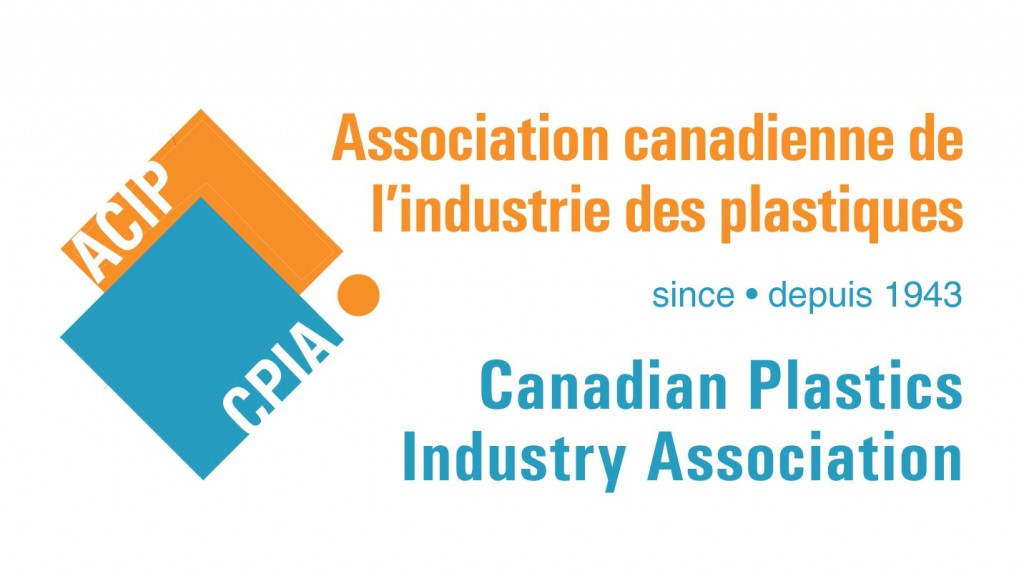Recycling report points to growth in Canadian capacity to recycle plastics

The Canadian Plastics Industry Association (CPIA) has released a report that illustrates the resilience of the Canadian recycling infrastructure in weathering the significant market challenges that have affected the industry over the past two years.
According to the report, the 2017 Post-Consumer Plastics Recycling in Canada, most of the recyclable material collected in Canada remained in North America for reprocessing into new products rather than being shipped to overseas markets. Eighty-eight percent of the material reported was reclaimed in Canada or the U.S., and 10 percent was exported overseas. The destination of the remaining two percent is unknown.
Every year, CPIA commissions the independent report compiled by California-based recycling consultant More Recycling (MORE) based on data supplied by recycling businesses in both the U.S. and Canada. The report reflects 2017 data.
2017 was a pivotal year for recyclers of post-consumer packaging and products around the globe. Even as recycled plastic resins were challenged in the marketplace by low cost virgin resin, the Chinese government enacted ‘National Sword' policies which blocked plastics and many other recyclables from entering the country. Ultimately, other Asian markets followed suit and stopped accepting recycled commodities from North America and Europe. The result over the past two years has been a significant tightening in the market as recyclers around the globe seek buyers for recovered materials.
Despite this, Canadians continue to recycle, and recycling programs continue to send these materials to end markets, the majority of which are in North America. They convert the plastics to new packaging and consumer and industrial goods.
Continuing strength in overall recovery
"This study again proves that by developing and maintaining strong domestic markets for recycled commodities we can continue to offer Canadians viable programs to recycle plastics. This is important because Canadians have demonstrated they are fully committed to and want to continue to recycle," points out Carol Hochu, President and CEO of CPIA.
As always, plastic bottles are the coast-to-coast leaders in recycling with 63% being collected at curbside or returned to depot for recycling. Following their first and potential reuse, PET bottles continue to be reprocessed to generate plastic fibers (for textiles) and to be converted into new bottles. HDPE bottles are most often converted into new bottles along with lumber and decking as well as lawn and garden products.
"Despite the challenges over the past two years, the mainstay programs for HDPE and PET jugs are very close to what we saw in previous year, before China's National Sword policies came into effect", says Hochu. "It's a testament to the strength of the North American reprocessing industry that recycling of materials from Canada stayed strong at 88% percent during this difficult period. Not only that, but Canadian recyclers were managing more materials generated in the U.S., as well."
Contrary to the positive outlook for traditional plastic bottle packaging, the tightening international markets have impacted plastics recycling rates across the board. This is reflected in a 5% overall decline in recovery rate through 2017. Plastic film recycling was most profoundly affected by export restrictions and a need for new domestic markets, particularly those able to process post-consumer materials from curbside programs. While many materials were also subject to reductions, most were just slightly off versus prior year values.
Canadian recyclers respond with innovation
"CPIA's team is working diligently with municipalities, industry and regulators to seek new ways to recover and derive continuing value from all types of plastic packaging including recycled content in new products and packaging," said Joe Hruska, CPIA's VP Sustainability. "When new and evolving packaging formats come along, like the new and emerging film and laminated plastics, there's often a lag in technology to manage this more complex material. But I'm excited to see the huge growth in recovery technology now, with new systems available to recycle curbside film, polystyrene and much more. With that, we're confident that the declines of 2017 will be offset over the years to come."
In recent months, new Canadian processing capacity has come on stream, using traditional mechanical recycling, as well as newer ‘resource recovery' technologies to recover the value from plastic materials and to ensure they don't go to litter or landfill. CPIA is working with stakeholders to identify new opportunities to divert post-consumer plastic materials from landfill and achieve success in "Zero Waste" strategies.
CPIA Plastics Industry Sustainability Commitments
The plastics industry has made ambitious shared societal commitments to manage plastics in Canada to achieve Zero Plastic Waste:
- 100% of plastic packaging is recyclable or recoverable by 2030
- 100% of plastic packaging is reused, recycled, or recovered by 2040
- 100% of Canadian resin manufacturing sites operated by CPIA members will participate in Operation Clean Sweep-Blue by 2022
View Report: 2017 Post-Consumer Plastics Recycling in Canada
Company info
5955 Airport Road, Suite 125
Mississauga, ON
CA, L4V 1R9
Website:
plastics.ca/home/index.php



